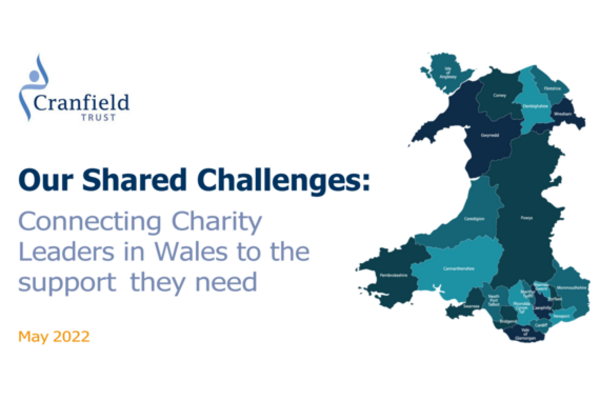Struggling to hit donation targets for your charity? You may need to give your marketing strategy an overhaul. Here, Craig Hall, Operations Director at Glass Digital, shares his top four tips for creating a successful marketing strategy for your charity.
Raising money for charities can be difficult, with so many other worthwhile causes out there for people to be donating to. And, while you may be among the 60% of non-profit organisations who already send out email updates and fundraising appeals to donors, among using other marketing tactics, it's important to note that the click-through rate for charities averages just 3.05% (The UK Domain). So, it's clear that your organisation needs to up the ante with your marketing campaign.
Here, I will be sharing my top four tips for creating a successful digital marketing campaign for your charity.
Understand your audience and their needs
The most important factor to consider is who your audience are and whether what you are putting out is resonating with them. While your intention is likely to reach as many people as possible, it's worth knowing that you may see a more effective campaign when you have a narrower target audience. This is because niche audiences are more likely to donate to charities that they feel is specifically aimed at them, rather than a broader range of people.
To ensure you're understanding your audience's needs properly, and therefore offering them products and services that they are willing to invest in, it's a good idea to come up with your 'ideal' persona: a fictional character that personifies who you would like to reach. This should include details like age, location, interests, education, and other attributes that can help you to make informed marketing decisions.
Once you've identified your specific audience, you'll be able to create more targeted messages on the right marketing channels. For example, if the work you do is likely to attract men and women over 50, your campaign will do best on Facebook if you're using digital marketing strategies. In contrast, if you want to target a younger demographic, take advantage of platforms like Instagram and Snapchat to get your message out.
Identify and market your USP
Our nation is great at raising money for charity, as proved by statistics from the Charity Commission, which revealed that, in the last quarter of 2018, there were over 160,000 registered charities in England and Wales. And this means you might struggle to attract donations if you don't have a unique selling point associated with your charity.
Differentiation is key to making your not-for-profit organisation stand out among others, so it's not enough to simply say you are determined or caring and professional, as those descriptors won't make you stand out among other charities.
To find your USP, it's worth looking into how others define themselves and thinking about how the work your charity does differs. For example, perhaps you collaborate with another charity to support other causes. Whatever it is that sets you apart from the rest, it's important that you get this message across with your marketing strategy to get people engaged with the work you're trying to do.
If you don't already have a strong USP, looking into why people may be hesitant to donate to certain charities may help. For example, perhaps people require clarity on where each penny of their donation is going, so showing the split of the donation that goes directly to the cause and how much is used for administrative purposes could be something to focus on.
Create an awareness campaign
The most common reason for setting up a charity is to raise money and awareness for issues close to your heart, and sharing this story with potential donators is the key to raising significantly larger amounts of money.
So, when you're thinking of creating a marketing strategy, the story behind your charity should be central to it. You will also need to consider exactly what the aim of your awareness campaign is. For example, is it to educate people about lesser-known diseases or conditions, or do you want to clear up any misconceptions to do with a certain topic? Similarly, you may want to think about whose attention you're trying to gain, whether that's the media or the public directly, as this can impact the type of advertising you do, and how much you spend on your campaigns.
Talking to your charity staff and key stakeholders can help you to answer these questions and, in turn, get the wheels in motion for developing and delivering an awareness campaign that will make an impact.
Create quality content to drive sales and donations
Creating informative and well-written content on matters to do with your charity and the issues surrounding it is a great way to drive sales and raise the number of donations you're getting.
This content can take the form of short, regular blogs that discuss topical issues, or cover newsworthy events such as charity trade fairs and how much money was made at them. You could also work on longer content marketing pieces that are optimised for SEO and inlink to your products or donation pages. Even conducting some simple keyword research and generating optimised title tags, meta descriptions, and H1s can make a big impact, so make sure you're at least doing this. If you're unfamiliar with SEO, Moz have a beginner's guide to SEO to help you get started.
However you decide to handle your charity content, ensure it's shareable. In fact, the survey by The UK Domain that I mentioned earlier found that simply adding a sharing button to e-mail campaigns increased the click-through rate by an astounding 158%, meaning shareable content is key. So, consider sharing your content across your social media platforms in order to spread the word further and drive sales and donations.
Give your charity's digital marketing campaign a boost with my top four tips. Whether you need to start creating shareable content or learn how to better target your online audience, you're sure to see a boost in sales and donations when you implement these points into your marketing strategy.








